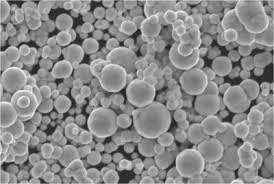The surface modifier has been selected, how should it be used?

The use of surface modifiers mainly includes: dosage, preparation, dispersion, addition method and the dosing sequence when two or more surface modifiers are used.
1. Amount of surface modifier
Theoretically, the optimal dosage is required to achieve monomolecular layer adsorption on the particle surface. This dosage is related to the specific surface area of the powder raw material and the cross-sectional area of the surface modifier molecules, but this dosage is not necessarily 100% coverage. The actual optimum amount of surface modifier should be determined by modification test and application performance test, because the amount of surface modifier is not only related to the uniformity of dispersion and coating of surface modifier during surface modification It is also related to the specific requirements of the application system for the surface properties and technical indicators of the powder raw materials.
When chemical coating modification is carried out, there is a certain corresponding relationship between the amount of surface modifier and the coating rate. Generally speaking, at the beginning, with the increase of the amount, the surface coating amount of the powder increases rapidly, but then The increase trend slowed down, and after a certain dosage, the surface coating amount no longer increased. Therefore, an excessive amount is unnecessary, which increases the production cost from an economical point of view.
2. Preparation method of surface modifier
Different surface modifiers require different formulation methods, such as:
For some silane coupling agents, it is silanol that acts as a bond with the surface of the powder. Therefore, in order to achieve a good modification effect (chemical adsorption), it is best to hydrolyze it before adding it.
For other organic surface modifiers that need to be diluted and dissolved before use, such as titanate, aluminate, stearic acid, etc., corresponding organic solvents should be used, such as absolute ethanol, isopropanol, glycerol, toluene, ether, Acetone etc. for dilution and dissolution.
3. How to Add Surface Modifiers
The best way to add the surface modifier is to make the surface modifier contact the powder uniformly and fully to achieve high dispersion of the surface modifier and uniform coating of the surface modifier on the particle surface.
Therefore, it is best to use the continuous spray or drop (addition) method that is linked with the powder feeding speed. Of course, only the continuous powder surface modifier can be used to continuously add surface modifiers.
4. Dosing sequence of surface modifiers
Due to the inhomogeneity of the powder surface, especially the surface properties of inorganic fillers or pigments, sometimes mixing surface modifiers is better than using a single surface modifier. For example, the combined use of titanate coupling agent and stearic acid to modify the surface of calcium carbonate can not only improve the surface treatment effect, but also reduce the amount of titanate coupling agent and production cost.
However, when two or more surface modifiers are used to treat the powder, the order of dosing has a certain influence on the final surface modification effect.
When determining the order of addition of surface modifiers, first of all, it is necessary to analyze the respective roles of the two surface modifiers and the way they interact with the powder surface (either physical adsorption or chemical adsorption). Generally speaking, the surface modifier that plays the main role and mainly based on chemical adsorption is added first, and then the surface modifier that plays a secondary role and mainly based on physical adsorption is added, but it is finally determined by application tests.
